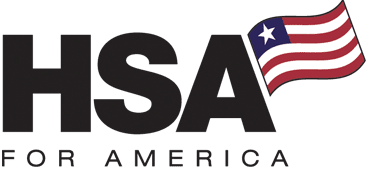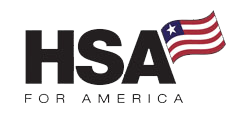LASIK eye surgery can be life-changing, but it’s also expensive.

Most people pay out of pocket because traditional health insurance rarely covers the procedure. This guide explains why that’s the case and explores alternative ways to afford LASIK.
Is LASIK Covered by Insurance?
Most of the time, health insurance does not cover LASIK procedures.
That’s because health insurance typically classifies LASIK as an elective or cosmetic procedure, rather than as medically necessary. Insurance companies argue that glasses and contact lenses are cheaper alternatives, even if they’re less convenient. And so LASIK is usually not covered by insurance.
However, there are some exceptions: If LASIK is required due to a specific medical condition, such as severe corneal damage from an injury, some insurance plans may cover part or all of the costs of the procedure.
Check your insurance plan documents directly for details. If you believe you may have an insurance claim, be prepared to provide documentation from your ophthalmologist supporting your case.
Compare Pricing on the Best Insurance Plans Available
Ways to Pay for LASIK
Vision Insurance Plans
Some vision insurance plans, such as VSP or EyeMed, offer discounts on LASIK if you use a surgeon within their network.
These discounts typically reduce the cost by 10% to 30%. While this won’t eliminate the financial burden, it can make LASIK more affordable for those already enrolled in a vision plan.
However, vision plans won’t cover the full costs. Most will restrict their plan benefits to a limited list of clinics or surgeons.
So be sure to check your plan documents before committing to a procedure.
Health Sharing Plans
Health sharing plans are an increasingly popular option for managing healthcare costs, including LASIK.
These plans are not traditional insurance but rely on members pooling resources to share medical expenses. Some health sharing plans, especially faith-based ones, may offer partial reimbursement for elective procedures like LASIK. However, in most cases, they’ll only directly share costs for procedures deemed medically necessary.
However, health sharing plans often negotiate deep discounts with providers for their members. So even if your health sharing plan doesn’t share the cost of a LASIK procedure, you can often
One advantage is flexibility. Health sharing plans often have fewer restrictions compared to insurance.
However, reimbursements are not guaranteed, and members must typically meet specific criteria for coverage. If LASIK aligns with your plan’s guidelines, you may be able to receive significant financial support.
Pros: Flexible and may partially cover LASIK if it improves overall health.
Cons: Coverage isn’t guaranteed, and each plan has unique rules.
Tip: Carefully review your health sharing plan’s policies, and consult a representative if you’re unsure about LASIK coverage.
Health Savings Accounts (HSAs) and Flexible Spending Accounts (FSAs)
Health Savings Accounts (HSAs) and Flexible Spending Accounts (FSAs) are two of the most tax-efficient ways to pay for LASIK.
Both of these plans allow you to use pre-tax dollars to cover medical expenses, including elective procedures like LASIK.
Health Savings Accounts (HSAs)
HSAs are available to those with a high-deductible health plan (HDHP). You can make contributions to your HSA tax-free. Funds grow tax-deferred as long as they’re held in the account. And withdrawals for qualified medical expenses, including LASIK, are tax-free.
So your HSA effectively lets you pay for LASIK tax-free.
Flexible Spending Accounts (FSAs)
You can also use money from an employer’s flexible spending account (FSA).
These are typically offered through employer benefits and operate on a “use-it-or-lose-it” basis. This means you must spend the money within a certain amount of time, or you must forfeit that money back to an employer.
Pros: Tax savings from both HSAs and FSAs can reduce the effective cost of LASIK by 20-30% or more, depending on your tax bracket and whether you are subject to state income taxes.
Cons: FSAs require careful planning to avoid losing unused funds.
Tip: Your HSA or FSA are generally the two most advantageous ways to pay for LASIK costs not covered under insurance or directly shareable via a health sharing plan. Even if your LASIK happens to be covered under your insurance plan, you can still use your HSA or FSA for deductibles, coinsurance costs, and even travel expenses for treatment.
Vision Discount Plans
Healthcare discount plans can also make LASIK more affordable.
These plans negotiate lower costs for elective procedures with participating providers. Companies like Careington or Aetna Discount Plans often have pre-arranged discounts for LASIK surgery.
How Vision Discount Plans Work
Unlike insurance, discount plans don’t reimburse costs but instead reduce the upfront price.
The savings can be substantial—sometimes 20-40% off standard rates. The downside is that these plans require an upfront membership fee, and savings vary by provider.
Pros: Immediate savings without complex reimbursement processes.
Cons: Membership fees and inconsistent discounts depending on the provider.
Medical Consumer Finance Companies
Medical consumer finance companies specialize in financing healthcare expenses.
You may see brochures for these credit companies in your doctors’ office waiting room or lobby. These companies offer structured payment plans, often with zero or low interest if the balance is paid within a promotional period.
Financing can make LASIK more manageable by breaking the cost into monthly payments. However, interest rates can skyrocket if you miss payments or fail to pay off the balance within the agreed timeframe.
These debts also typically show up on your credit report. They also typically run a credit check on the application, which can drop your credit score by a few points.
However, approval is usually fast, and credit standards are reasonable. Interest rates tend to be higher than a personal loan, but slightly lower than credit card interest. However, you have less freedom to vary your payments than you do when you finance via a credit card.
Medical Tourism
Medical tourism is an option for those willing to travel for affordable LASIK surgery.
Countries like Mexico, Turkey, and Thailand are well-known for offering high-quality medical care at significantly lower prices.
The savings can be substantial, but there are risks. Quality varies widely between clinics, and follow-up care might be challenging if complications arise once you return home.
Before you schedule LASIK or any other medical procedure abroad, make sure your provider is accredited with the Joint Commission International. This organization inspects hospitals and other providers abroad for sound medical practices, sanitation, and quality control.
Pros: Substantial cost savings and access to skilled surgeons abroad.
Cons: Going abroad for medical care involves travel expenses, language barriers, and limited follow-up care.
Tip: Thoroughly research clinics, verify credentials, and consider all travel costs before committing.
The HSA AdvantageRx Discount Card
The HSA AdvantageRx card is a free benefit available to HSA for America clients. While primarily used for prescription medications, it can also offer discounts on elective procedures like LASIK.
One major benefit is that the card doesn’t require an ongoing subscription or membership fee. However, discounts vary, and not all LASIK providers accept them.
Pros: Free for HSA for America clients and easy to use.
Cons: Limited acceptance among LASIK providers.
Learn More: HSA For America Additional Member Benefits
Medical Credit Cards: A Last Resort
Medical credit cards like CareCredit, can be a fallback option. They function similarly to traditional credit cards but are specifically designed for healthcare costs.
While they can help in emergencies, these cards often carry high interest rates after an initial promotional period. If you’re unable to pay off the balance quickly, the debt can become overwhelming.
Pros: Immediate access to funds for LASIK.
Cons: High interest rates if the balance isn’t paid off quickly.
Tip: While medical expenses are partially deductible for those who itemize their expenses personal credit card interest is not deductible.
Learn More: CareCredit: Is It A Good Deal?
Compare Pricing on the Best HealthShare Plans Available
Is LASIK Covered by Insurance: Final Thoughts
LASIK is an investment in your vision and quality of life.
While insurance rarely covers it, options like health sharing plans, vision insurance, discount plans, and financing can help make it more affordable. Each method has its advantages and drawbacks, so take the time to research and choose the one that best fits your financial situation.
Have questions? Need to review your health plans? Your HSA For America Personal Benefits Manager is an expert!
Most insurance brokerages can’t or won’t talk to you about all your options, including money-saving health sharing plans, which can save thousands of dollars per year compared to an unsubsidized traditional health insurance plan.
Don’t pay more than you need to for your health plan. Make an appointment with a Personal Benefits Manager today.
For Further Reading:



